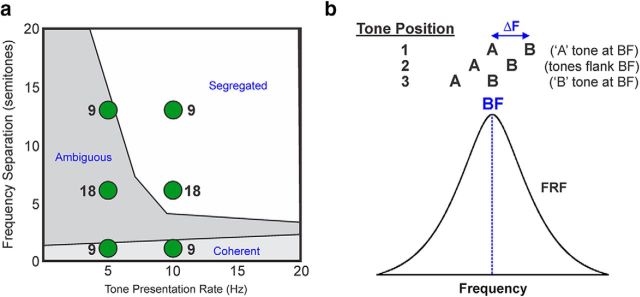Figure 3.
a, Perceptual boundaries of auditory stream segregation. Slow presentation rates and small frequency separations between A tones and B tones comprising alternating tone sequences promote the perception of a single coherent auditory stream, whereas rapid presentation rates and large frequency separations promote the perceptual segregation of tones into two separate auditory streams. Intermediate values of frequency separation and presentation rate often lead to an ambiguous percept (data based on McAdams and Bregman, 1979). Green discs indicate stimulus conditions tested in the present study and numbers by the discs indicate number of electrode penetrations in which a given stimulus condition was tested. b, Schematic representation of the relationship between the frequencies of A tones and B tones under position 1, 2, and 3 stimulus conditions and the FRFs of neural population responses recorded in each electrode penetration into A1. The BF of the site corresponds to the frequency at which the FRF is maximal. The three tone positions include a key subset of the five tone positions tested by Elhilali et al. (2009). Stimulus configurations are designed to yield data from which tonotopic activation patterns in A1 under SYNC and ALT conditions can be inferred.

